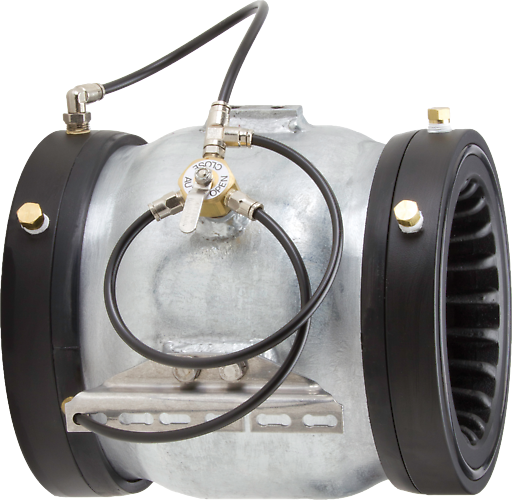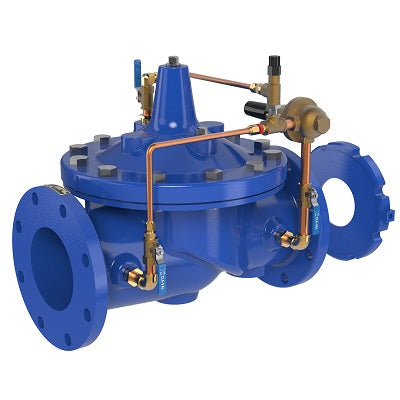Cutting-edge Control Valves: Enhancing Precision and Reliability
Cutting-edge Control Valves: Enhancing Precision and Reliability
Blog Article
Achieve Seamless Assimilation and Control With Quality Structure Automation Controls
In the realm of modern building monitoring, the significance of quality structure automation controls can not be overemphasized. Welcoming high quality structure automation controls is not just an issue of ease yet a tactical necessary for organizations aiming to maximize their centers' performance and sustainability.

Evolution of Building Automation Controls
Throughout the past few decades, the evolution of building automation controls has substantially changed the method buildings are taken care of and run. Originally, constructing automation systems primarily concentrated on standard features such as controlling ventilation, home heating, and air conditioning (COOLING AND HEATING) systems. As innovation progressed, these controls have come to be a lot more advanced, enabling for a broader range of structure systems to be integrated and taken care of centrally.
The development of building automation controls has actually seen a shift in the direction of even more smart systems that can adjust to transforming conditions in real-time. This versatility is essential for maximizing power efficiency and making certain occupant comfort. In addition, modern structure automation controls now use functions such as predictive upkeep, remote surveillance, and information analytics, enabling facility managers to make data-driven decisions to enhance building performance.

Advantages of Top Quality Combination
The advancement in structure automation regulates in the direction of more smart systems has emphasized the significant benefits of quality assimilation in enhancing building operations and boosting general effectiveness. This centralized control likewise gives much better exposure and insights right into building efficiency, making it possible for positive maintenance and optimization techniques. In general, the advantages of quality combination in structure automation controls are indisputable, providing enhanced effectiveness, comfort, and operational performance.
Enhanced Customer Experience and Access
Enhancing individual communication with building automation controls through instinctive layout and boosted ease of access raises the general experience for owners and center managers alike. By concentrating on user experience, constructing automation systems can become more reliable and user-friendly. User-friendly user interfaces, clear navigating, and customizable settings equip customers to engage with the controls conveniently and efficiently.
Access functions play a critical function in making certain that all individuals, including those with impairments, can use the structure automation controls effortlessly. Incorporating functions such as voice commands, tactile buttons, and color-contrasted displays can boost ease of access and make the controls more inclusive.
Furthermore, enhanced user experience causes greater individual satisfaction, boosted efficiency, and better decision-making. Occupants can change ecological settings according to their preferences, while facility managers can effectively take care of and keep an eye on structure systems - control valves. In general, prioritizing individual experience and availability in structure automation controls adds to a much more seamless and productive structure setting for all stakeholders entailed
Lasting Practices Through Automation

Furthermore, automation can help with the combination of renewable resource sources review such as solar panels or wind turbines right into building operations. By automatically readjusting power usage based on the accessibility of eco-friendly energy, structures can better decrease their reliance on non-renewable sources. This smooth combination of sustainable techniques not only benefits the atmosphere yet additionally enhances the general functional performance and cost-effectiveness of the structure. Through automation, buildings can line up with contemporary sustainability objectives and add to a greener future.
Future Trends in Building Control Systems
One noticeable pattern forming the future of building control systems is the increased combination of Artificial Intelligence (AI) and equipment knowing. In addition, the Net of Things (IoT) is changing structure control systems by connecting gadgets and sensing units to streamline operations and improve effectiveness.
An additional vital trend is the emphasis on cybersecurity measures to protect against potential dangers to constructing automation systems. As structures come to be more interconnected, making sure durable cybersecurity protocols will be vital to protect delicate information and prevent unapproved access.
In addition, the change towards cloud-based platforms is obtaining energy, permitting centralized control and remote access to structure systems. This promotes less complicated surveillance, upkeep, and updates, improving the overall performance and adaptability of building control systems. As innovation remains to advance, these fads are expected to shape the future landscape of structure automation controls, driving development and sustainability in the built setting.
Final Thought
Future trends in structure control systems are you can check here most likely to concentrate on further improving automation capabilities for enhanced energy performance and general efficiency. It is important for structure proprietors and operators to focus on the fostering of quality structure automation controls to maximize building operations and accomplish lasting sustainability objectives.
In the world of modern building management, the relevance of high quality structure automation controls can not be overemphasized. On the whole, the evolution of building automation controls proceeds to drive innovation in the building management industry, using brand-new possibilities for creating smarter and extra sustainable buildings.
The improvement in structure automation controls towards even more intelligent systems has highlighted the substantial advantages of high quality combination in optimizing building procedures and boosting total effectiveness. Generally, focusing on customer experience and access in structure automation manages contributes to an extra smooth and efficient structure atmosphere for all stakeholders included.
It is necessary for building owners and drivers to prioritize the adoption of top quality building automation manages to enhance structure procedures and accomplish long-term sustainability objectives. - control valves
Report this page